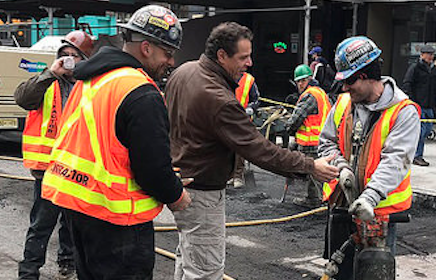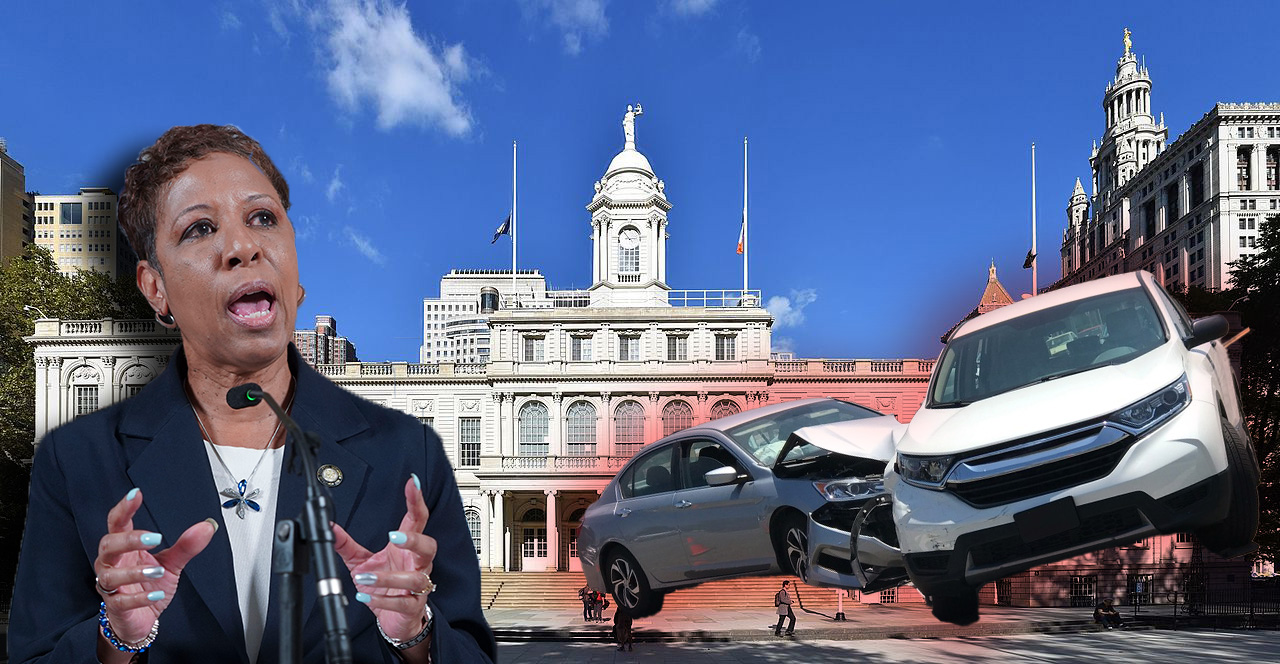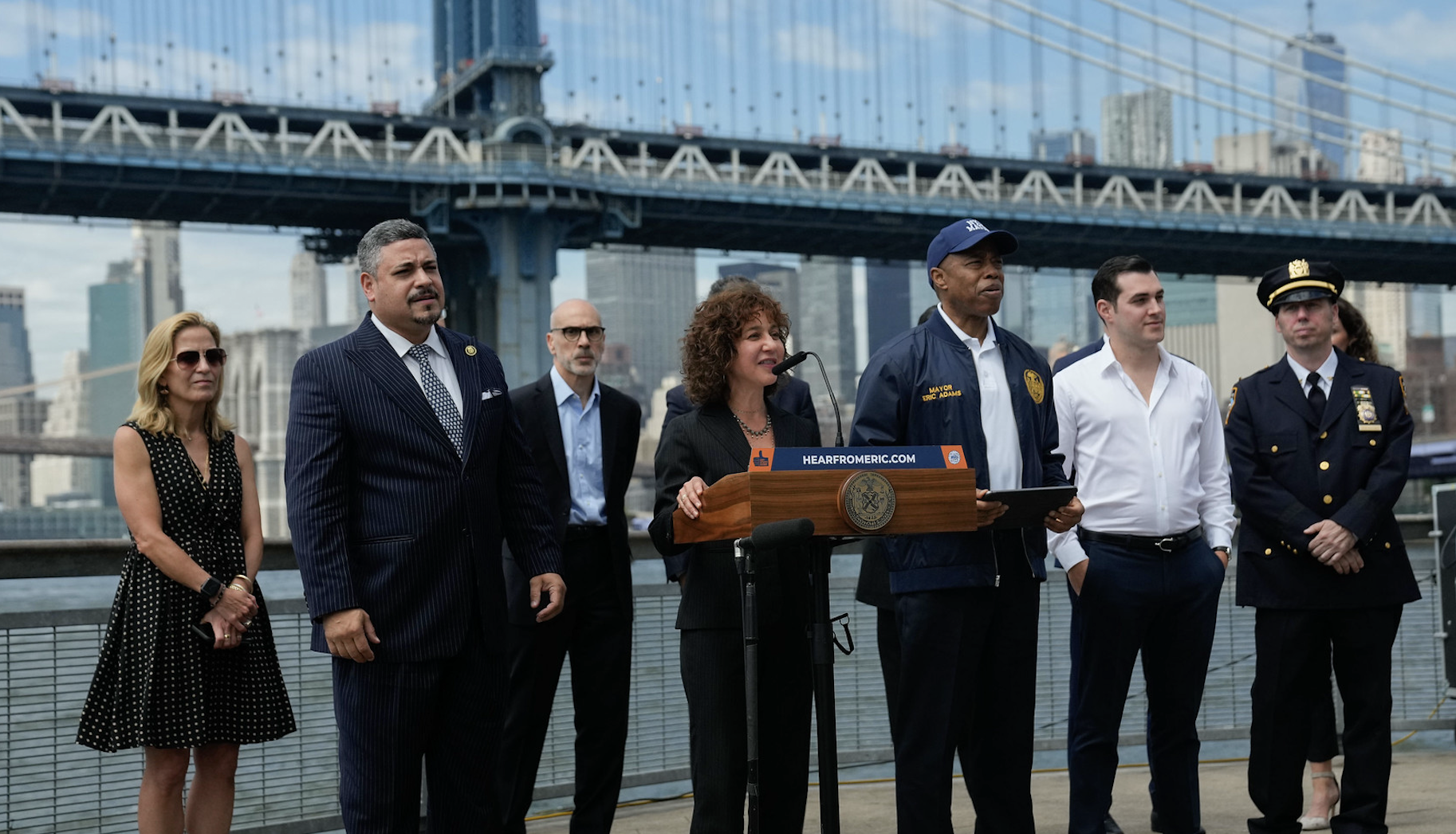No need for a long, windy intro. We all know that Gov. Cuomo torpedoed the MTA's longstanding plans to completely shut the L-train tunnel between Manhattan and Williamsburg in favor of a less-intensive proposal that raises a million questions. So here goes...
Wait, so what's the plan?
Even though the MTA has been working on fixing the Hurricane Sandy-damaged tunnel for three years, Cuomo has jettisoned the full 24-hour-a-day, 7-day-a-week shutdown in favor of a partial plan that would close only one of the two tunnels on nights and weekends and merely patch damaged portions of the tunnel, and mount new cables on the walls rather than painstakingly replace them inside the walls.
For years, the MTA said it needed to replace 302,000 feet of cable, 14,000 feet of rail, plus 15,000 feet of third rail, reconstruct 30,000 feet of concrete ducts, install new tunnel lights, replace pumping equipment, build a substation, replace circuit breakers, repair a fire-protection system, and repair 7,100 feet of concrete that lines the tunnel [PDF]. It is unclear what, if any, of that work will be done.
Cuomo's engineering consultant, Mary Boyce, dean of the Fu Foundation School of Engineering and Applied Science at Columbia University, told reporters that an easier plan is possible here because it had been tried in London and Riyadh.
Forgive us if we don't think much of the Riyadh subway system, which hasn't even opened yet.
Why did he do it?
There's lots of speculation, including some that Cuomo wanted to impress 2020 or 2024 presidential voters (which is complete hogwash, given that no Democratic primary voter in Iowa or New Hampshire would ever have said the words, "I was leaning towards Cuomo until I heard that some commuters in Canarsie had been inconvenienced by his decision to repair vital infrastructure").
Obviously, this is all about Cuomo, as the Times far-from-subtly pointed out: "Mr. Cuomo appeared pleased to have stepped in to save the day," reporter Emma Fitzsimmons wrote.
Indeed, Cuomo said he believes that straphangers favor a partial shutdown rather than a full one, though polls indicate just the opposite, as the Post mentioned in its editorial.
And Cuomo will definitely see an "L train bump," judging by the Post's gushing front page.
Tomorrow’s cover: Brooklyn residents thrilled after L-train shutdown nixed https://t.co/CE6DPkkZWz pic.twitter.com/EvlNQqEoGW
— New York Post (@nypost) January 3, 2019
Who is credible — Cuomo or the MTA?
Cuomo says the Canarsie Tunnel does not need to be shut because all that's needed is fiber-reinforced polymer to patch it. (Hmm, patching it doesn't sound very comprehensive.) This decision comes just a few days after Cuomo toured the tunnel with a hand-picked engineering team — and three years after the MTA said the repairs were absolutely essential. Indeed, the agency issued this dire statement two months ago:
The L tunnel – also known as the Canarsie Tunnel – was one of nine underwater tunnels that flooded during Superstorm Sandy in 2012. ... The tunnel was flooded with enough water to fill 11 Olympic-sized swimming pools and suffered extensive damage to tracks, signals, switches, power cables, signal cables, communication cables, lighting, cable ducts and bench walls throughout a 7,100-foot-long flooded section of both tubes. Bench walls throughout those sections must be rehabilitated to protect the structural integrity of the tubes.

Protect the structural integrity — sounds important, right?
And the MTA's plan was very detailed because, it said, the repairs were so urgent (see one page of the agency's handout left).
Independent analysts seemed to side with the MTA. "The repairs are necessary because saltwater inundation in 2012 caused by hurricane Sandy accelerated deterioration within the tunnel," Crain's reported. "Temporary work allowed the tunnel to reopen soon after the storm, but conditions continued to worsen." (Continued to worsen sounds bad, right?)
Meanwhile, Dan Rivoli of the Daily News pointed out that the very part of the tunnel that Cuomo will patch rather than replace caused a subway derailment when it collapsed one time.
A crumbling bench wall in the G train tunnel once caused a derailment.https://t.co/MtwQiZ08EN
— Dan Rivoli (@danrivoli) January 3, 2019
Those are the stakes facing L train commuters now that the repairs are a patch job instead of a full renovation.
Here's the exchange with me and the governor on this today: pic.twitter.com/zzzL92ew8Y
And MTA board member Veronica Vanterpool was stunned to find out about Cuomo's announcement shortly before it was made, given the supposedly dire condition of the tunnel.
"What are the long-term implications of this decision? Are we just essentially putting a Band-Aid on a problem that has been well documented?" she said, according to amNY.
Riders Alliance Executive Director John Raskin pointed out that the emperor is the one with no clothes in this debate.
"At the end of the day, what riders care about is whether the L train is repaired for the long term, and how much disruption it will take to get there," he said. "The governor's plan may or may not work, but you'll pardon transit riders for being skeptical that a last-minute Hail Mary idea cooked up over Christmas is better than what the MTA came up with over three years of extensive public input."
And interim MTA board chairman Freddy Ferrer didn't help Cuomo sound very credible when he told reporters, "You might ask, 'Well why wasn't this approach considered earlier?' The answer is that the integration of these approaches — there are several — and the technology had not previously been applied in the context of a rehabilitation project. It's innovative, creative and we deem it a sound plan." (A sound plan? Cooked up in a couple of weeks?)
Who does this help?
Cuomo wants us to believe it helps all commuters.
"You would have roughly 250,000 people who would need a different way to get to work," he said of the shutdown. Closing the tunnels only on nights and weekends will "be a phenomenal benefit to the people of New York City," he added.
Judging by the coverage — from NY1's report of blissful residents of 14th Street to New York Times Metro Editor Clifford Levy's horrendous tweet — NIMBYs along 14th Street are pleased, as are selfish inter-borough subway riders.
But aren't we forgetting something...
Who does it hurt?
Almost everyone:
- One of the government's basic tasks is to maintain infrastructure. If, indeed, the Canarsie Tunnel is damaged as badly as the MTA said, failing to fix it now will bring much more pain (and expense) later.
- The biggest losers, of course, are the L-train riders who use the train on nights and weekends — which may not sound like a lot of people to daytime commuters, but the L train is one of the busiest lines on nights and weekends. There's also a class issue, as nighttime riders tend to be working people, as Erwin Figueroa of TransAlt and others pointed out.
As always, poor and POC New Yorkers will bear the brunt of this new "plan" for the L train, as shutdowns during nights and weekends will impact them the most. The bike lanes, busways and longer G trains need to remain as planned. #CuomosL
— Erwin Figueroa (@TransitErwin) January 3, 2019
- People who were already using the new protected and on-street bike lanes — and were looking forward to HOV3 lanes on the Williamsburg Bridge — all which may soon be erased because of the "sea change" of Cuomo's announcement, Mayor de Blasio said. "We’re going to evaluate what [the announcement] means and if we’re going to look at these things in another light."
- People who wanted to reclaim our roadways from car commuters, who will likely again be able to drive over the Williamsburg Bridge in their single-occupancy vehicles and Ubers.
- Most important, the MTA's credibility has now been completely undermined by Cuomo, which is a problem because...
Wait, doesn't Cuomo need the MTA to look good right now?
The timing of the announcement is a horrendous public relations disaster for Cuomo, who is about to head back to Albany to push congestion pricing to a less-than-enthusiastic legislature. In many interviews with Assembly and Senate lawmakers, Streetsblog has found intense ambivalence among outer-borough legislators, who wrongly believe that many of their constituents regularly drive into the city (very few do, statistics show) and that congestion pricing would hurt working-class people (car commuters tend to be wealthier overall).
So just as he's about to counter that hemming and hawing with a bold plan to raise $1 billion per year for the MTA, Cuomo basically undermines the MTA's credibility as a steward of the transit system. Even the spokesman for Mayor de Blasio — who has also waivered on congestion pricing — pointed that out.
“Like everyone else, the mayor thinks the MTA has some real explaining to do about how it has handled this for the last few years,” spokesman Eric Phillips said in a statement that also questioned the MTA's abilities.
Aaron Gordon of Signal Problems also raised these questions on Friday morning:
I don’t know how the MTA, as an agency, recovers whatever credibility it had left. What happens the next time the MTA determines a major public works project must be undertaken? Who is going to take them seriously? Who is going to defer to their expertise? What does this mean for Byford’s upcoming appeals to the state legislature to give him some $60 billion? Are elected officials going to say “we believed you about the L shutdown being necessary, why should we believe you now?” I suspect Byford will try to spin it as a sign of the agency’s nimbleness and willing to accept best ideas, but I don’t know how that will play.
Will Mayor de Blasio keep the good parts of the L shutdown?
As noted above, the mayor is skeptical that he needs to keep the good stuff like the sort-of protected bike lanes on 12th and 13th streets — which NIMBY groups oppose because they removed on-street car storage — and dedicated bus lanes. Advocates are demanding that the street safety and transit improvements remain, but NYC Transit President Andy Byford said new ferry service would certainly be eliminated.
"Smart transportation plans have been laid in concert with community and elected leaders that should still go into effect, including the transit way on 14th Street, which would serve as a model for improving bus travel throughout the city; experimentation with HOV restrictions on East River crossings; and accessibility and station circulation upgrades at First Avenue, Sixth Avenue, Union Square, and Bedford Avenue," the Regional Plan Association said in a statement. "Changes like these would improve the commutes of hundreds of thousands of New Yorkers and visitors to our city and help our city address pressing transportation challenges.”
Should Andy Byford resign in protest?
Of course he should. Byford was informed of Cuomo's decision shortly before it was announced publicly, putting him in the position of having to answer for a governor who had just bigfooted him worse than a raging Sasquatch. If Cuomo's plan succeeds, Cuomo gets the credit. If it fails, Byford will have to clean up the mess.
Poor guy sounds sick and tired. https://t.co/GeCdok9NyE
— David J. Meyer (@dahvnyc) January 3, 2019
Meanwhile, Byford looks like an ineffective leader just when he's trying to restore faith in the system he oversees.
He should consider resigning in protest, as Travis Eby, a member of the Tri-State Transportation Campaign pointed out in a tweet.
Everybody working for Cuomo should resign in protest, starting with Andy Byford https://t.co/D6bsv7fsPV
— Travis R. Eby (@travis_robert) January 3, 2019
Oh, and what's with Clifford Levy's New York Times Metro section lately?
Before anyone could digest the ramifications of Cuomo announcement, Levy, the editor of the Metro section of the supposedly sober Gray Lady, tweeted, "Brooklynites, rejoice! Cuomo plans to cancel the full shutdown of the L train between Brooklyn and Manhattan."
It was a weird take from an important opinion-maker — and transit advocates let him have it all day.
You are the head of the metro section and you don’t know this is a Cuomo ham job?
— Cameron O'Leary (@CamtrakAcela) January 3, 2019
“Metro Editor at New York Times” clueless. Makes you wonder how a person gets that job title while not comprehending the issues related to it.
— Thomas Skull 💀 (@thomstern) January 3, 2019
Worse, Levy's Twittergate comes just one day after his Metro section published a story questioning why the Port Authority should continue running the PATH train — which serves 82 million rides a year — because it loses money. The implication that Levy allowed into print is that transit and other infrastructure exists to raise money rather than fulfill its actual purpose: to foster the regional economy. Levy's Metro section also recently reported on the need for adult crossing guards in Tribeca without even mentioning congestion pricing or holding any politician accountable for allowing suburban commuters to terrorize city pedestrians.






